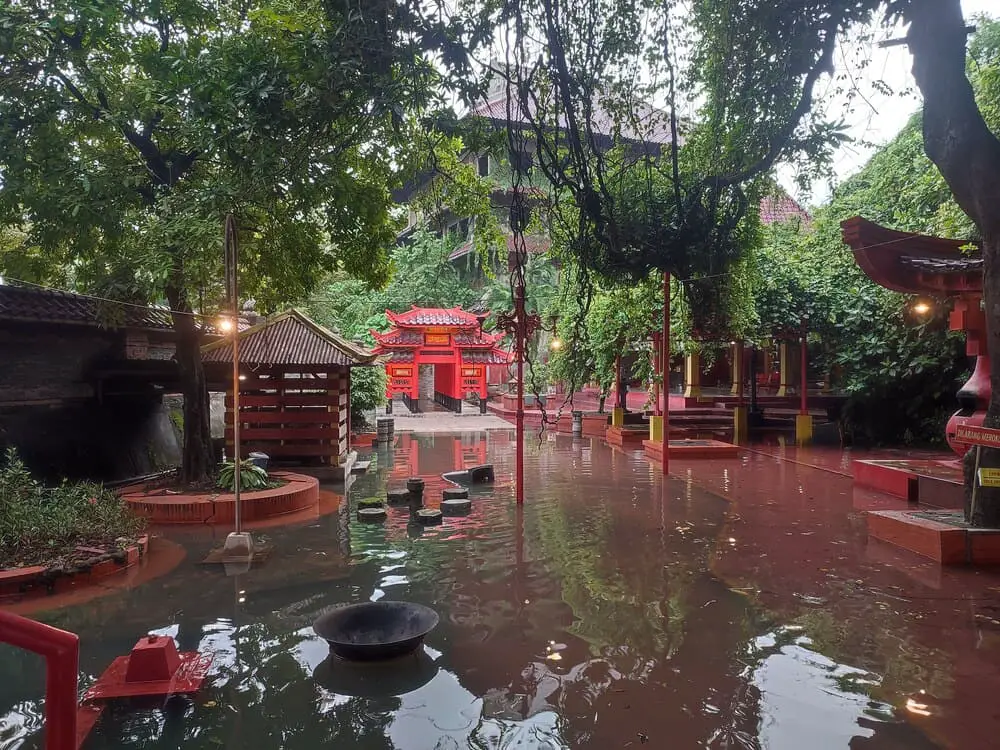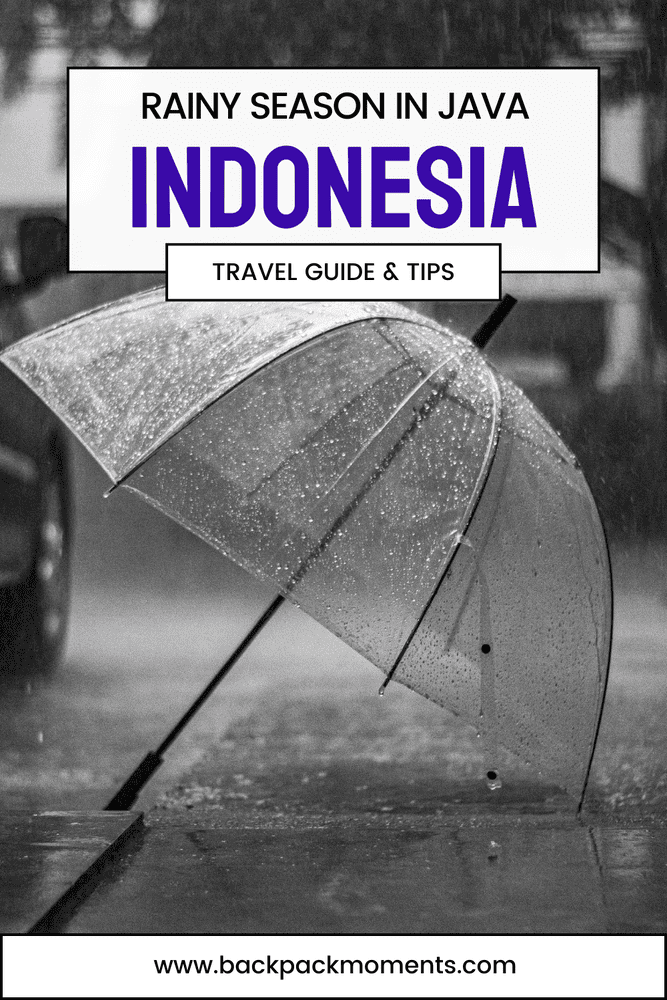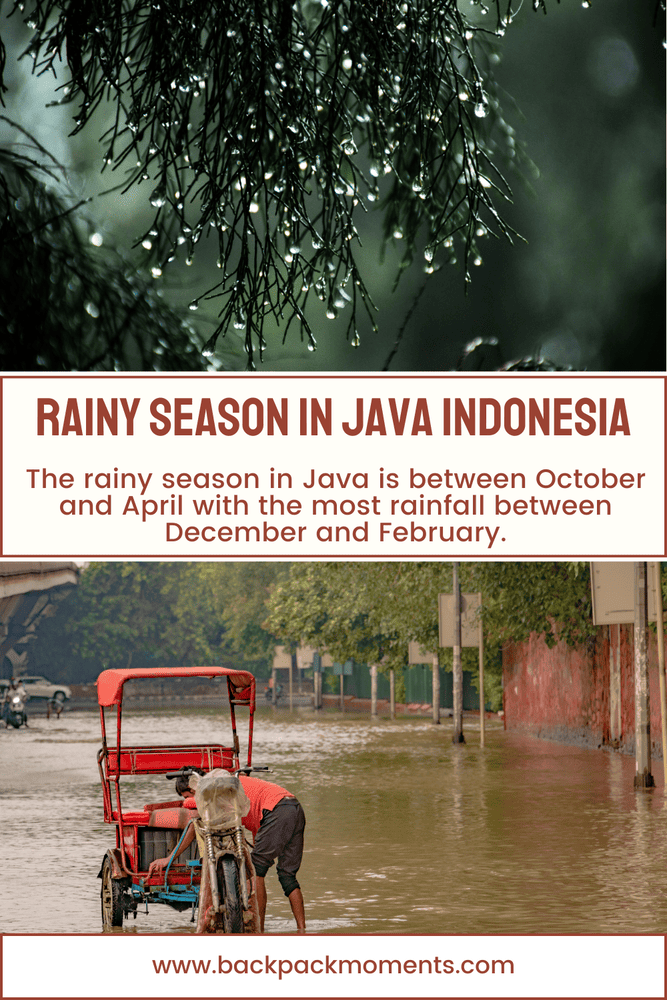Rainy Season in Java: What to Expect?
This post may contain affiliate links. If you make a purchase using one of these links, I may receive a small reward at no extra cost to you. See my Disclosure Policy for more information.
Java has only two seasons: dry and rainy. While the temperature throughout the year is pretty uniform, rainfall varies dramatically.
Is the rainy season in Java that bad? Not necessarily.
If you travel to Java during the rainy season, you will likely have a wonderful time, potentially even better than in the dry season!
Java is a year-round destination and a few drops of water in the afternoon don’t change that. Let’s take a closer look.
When is the rainy season in Java?
The rainy season in Java is between October and April with the most rainfall between December and February.
The shoulder season months are October, November, April, and May.
Central and East Java get less rain than West Java and their rainy seasons are a bit shorter.
Check out the weather and rainfall data for Indonesia here. It includes links for specific data by region, Java being one of them.
How much does it rain during the rainy season in Java?
The short answer is not that much!
For example, during the peak of the rainy season in January, there is around 300 mm of precipitation. The dry season only experiences around 50 mm.
Yes, we are talking about a 6 times increase, but that’s only because the dry months of July and August are really, really dry.

In reality, during the rainy season in Java, it usually rains in the afternoon, less often in the morning.
The rains are quick and it downpours an extreme amount of rain in an hour, but afterwards, the sun is back in the sky and you’re good to go out and explore.
Can you travel to Java during the rainy season?
Java is a year-round destination. Of course, you can travel to Java during the rainy season, but a better question is “Should you“.
Here are a few reasons why I think the answer to this is a resounding YES:
- It doesn’t rain all the time! Rain is short and comes in bursts.
- The rainy season makes Java a lot quieter and laid-back.
- Prices are up to 50% lower because of the low tourist season.
- The rain clears the pollutants in the air.
- You can still enjoy marvelous weather and visit most attractions in Java.

What to avoid during the rainy season in Java
Getting to more rural destinations and some of the natural attractions could prove more difficult during the rainy season.
That doesn’t mean you should skip them altogether.
If you plan on hiking Mount Bromo or Kawah Ijen, I suggest you do it in the early morning to noon when the chance of rain is the lowest. It will also give the earth some time to absorb the water from last night’s rains.
This is just a rule of thumb – not necessarily always true. Check the weather forecast a few days before you go and be ready to adjust your itinerary.

What is the best season to travel to Java?
The best season to travel to Indonesia is neither the dry one nor the rainy one – it’s the shoulder months!
Let me elaborate.
In the dry season, there’s almost no rain, temperatures are a little lower (2-3 degrees lower than in the wet season), humidity is 3-4% lower (but still pretty high at 85% average) but, and that’s a big BUT, the crowds are enormous and the prices the highest.
In the rainy season, the prices are of course lowest and tourists are few and far between, but it could obviously be a little annoying to carry a raincoat all the time and have a hard time reaching some of the wonderful places.

The Shoulder Season.
Yes, nobody calls it that, but I think there’s a distinct mix of good travel conditions exactly during the shoulder months. Less crowded, cheaper and the weather is quite good.
The Shoulder Season is the jack of all trades, master of none, but overall the best time to travel to Java. My best tip: travel to Java in September, October, and November, or in April, May, and June.
Need more? Check out my complete Java backpacking itinerary.
Or see if the rainy season in Bali is any different (hint: not really).


